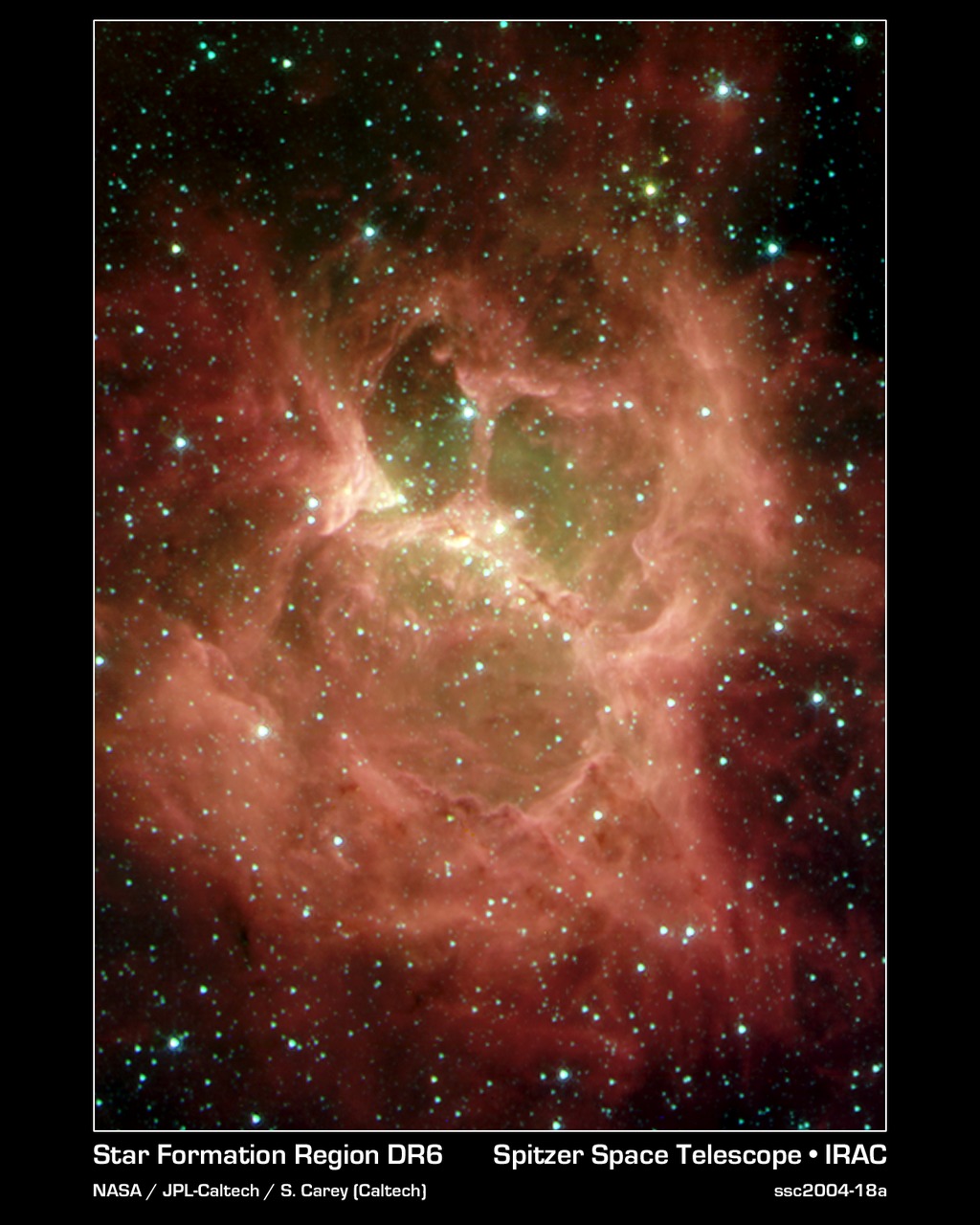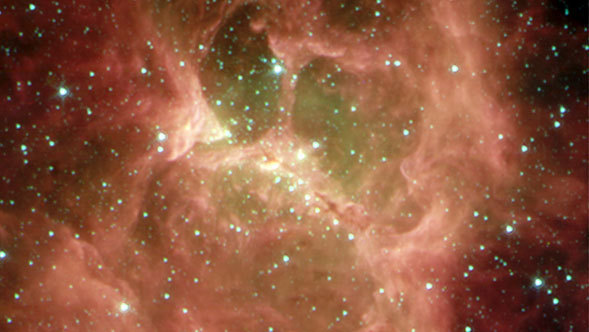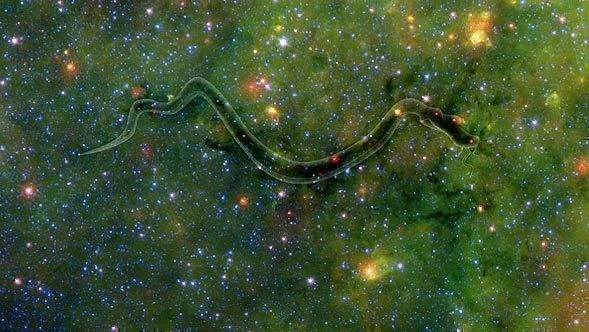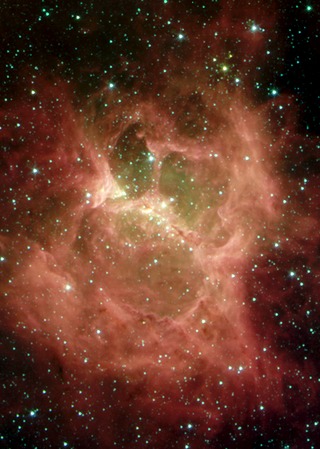
Credit: NASA/JPL-Caltech/S.Carey (Caltech)
Observation • October 28th, 2004 • ssc2004-18a
ssc2004-18a
A "monster" lurking behind a blanket of cosmic dust is unveiled in this new Halloween image from NASA's Spitzer Space Telescope. Resembling a ghoul with two hollow eyes and a screaming mouth, this masked cloud of newborn stars was uncovered by Spitzer's heat-seeking infrared eyes.
The spooky cloud -- a nebula called "DR 6" residing in the plane of our Milky Way galaxy -- is home to a cluster of about 10 massive newborn stars, ranging in size from 10 to 20 times the mass of our Sun. The nebular "eyes" and "mouth" were carved out by intense heat and winds, which shoot outward from the stars (located in the central bar or "nose"). The green material remaining in the eyes and mouth is comprised of gas, while the red regions and tendrils beyond make up the dusty cloud that originally gave birth to the young stars.
Within the nebula's nose, a second generation of stars is in the process of forming. These stars, in turn, will sculpt their stellar nursery, and ultimately affect the birth of yet another generation of stars. Spitzer provides astronomers with an unprecedented combination of sensitivity and spatial resolution to study this cycle in detail.
DR 6 is located 3,900 light-years away in the constellation Cygnus. The distance from one end of its central bar to the other is the about 3.5 light-years, or about the same distance from our Sun to its nearest neighbor, Alpha Centauri.
This image composite was taken on Nov. 27, 2003, by Spitzer's infrared array camera. It is composed of images obtained at four wavelengths: 3.6 microns (blue), 4.5 microns (green), 5.8 microns (orange) and 8 microns (red).
About the Object
- Name
- DR 6
- Type
- Nebula > Type > Star Formation
- Distance
- 3,900 Light Years
Color Mapping
| Band | Wavelength | Telescope |
| Infrared | 3.6 µm | Spitzer IRAC |
| Infrared | 4.5 µm | Spitzer IRAC |
| Infrared | 5.8 µm | Spitzer IRAC |
| Infrared | 8.0 µm | Spitzer IRAC |
Astrometrics
- Position (J2000)
- RA =20h 27m 12.5s
- Dec = 39° 26' 4.0"
- Field of View
- 9.9 x 13.8 arcminutes
- Orientation
- North is 30.7° left of vertical







